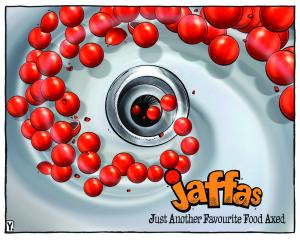
Many national anthems have surprisingly long histories. I have little knowledge of most nations’ anthems but offer these modest opinions on a few, with our own national anthem God Defend New Zealand being a good starting point. This is based on a poem written by Thomas Bracken. He was an Irish-born New Zealander who arrived in Dunedin in the late 1860s.
In addition to being a poet of some renown, Bracken was also a journalist and in later life a politician. John Joseph Woods, of Lawrence, produced a musical version of the poem in 1876 which was followed by a Maori version in 1878.
A century on in 1977, God Defend New Zealand became our national anthem. This can sound rather solemn and even funereal, but with a lift in tempo becomes more appealing.
Given the unreliability of our ailing Orion/Hercules aircraft and the nation’s modest military resources, it seems appropriate that the anthem invokes a deity to provide for our country’s defence.
Advance Australia Fair has been that country’s anthem since 1974 when it replaced God Save The Queen. This was written by Scottish-born composer Peter Dodds McCormick and first performed in 1878.
The opening words "Australians all let us rejoice, for we are young and free" is a nice touch and the anthem overall exudes optimism and vitality.
Waltzing Matilda was commonly sung until 20 years or so ago, but the theme of an itinerant outback swagman no longer fits with the image of a modern, cosmopolitan Australia.
The British national anthem God Save The King is arguably well past its used-by date. It was first sung in the early 19th century at which time the British Empire was in a rapid expansionary phase that reached its zenith in the early 20th century. Few countries now remain under that umbrella. Kings and queens are a relic of the past. It should not be too difficult to find a modern anthem which is centred on the people and not a heriditary monarch. Perhaps in the meantime Neil Diamond’s Sweet Caroline could be considered!
The Republic of Ireland and Northern Ireland remain politically divided. Yet when it comes to sports like rugby and cricket they commendably unite as one. This requires an anthem that reflects Ireland in its totality. Since 1995 an anthem called Ireland’s Call has been used by these sporting codes. It starts with the words "Ireland Ireland side by side we stand like brothers". What could be more unifying than that?
Two anthems that truly uplift and may well endure for all time are La Marseillaise and The Star Spangled Banner. La Marseillaise was the inspiration for the French Revolution and became the national anthem in 1795. It’s an exhortation to take up arms against the enemy no matter how bloody and violent the consequences.
One of the highlights of a sporting occasion with France is their rendition of La Marseillaise and the emotional power and strength of that.
The Star Spangled Banner likewise has very special qualities. It is based on a relatively short poem written by Frances Scott Key in 1814 after he had witnessed the bombardment of a Maryland fort by the British during the war of 1812.
The beleaguered Americans prevailed and were seen to raise "that Star Spangled Banner".
It was later set to music and became the American national anthem in 1931. The lyrics are exceptional and as an anthem it is hugely patriotic and inspiring.
Many other countries have anthems of beauty and strength. The best capture the history and character of their nations. When sung well they elevate the human spirit.
- Joss Miller is a retired Dunedin lawyer.












